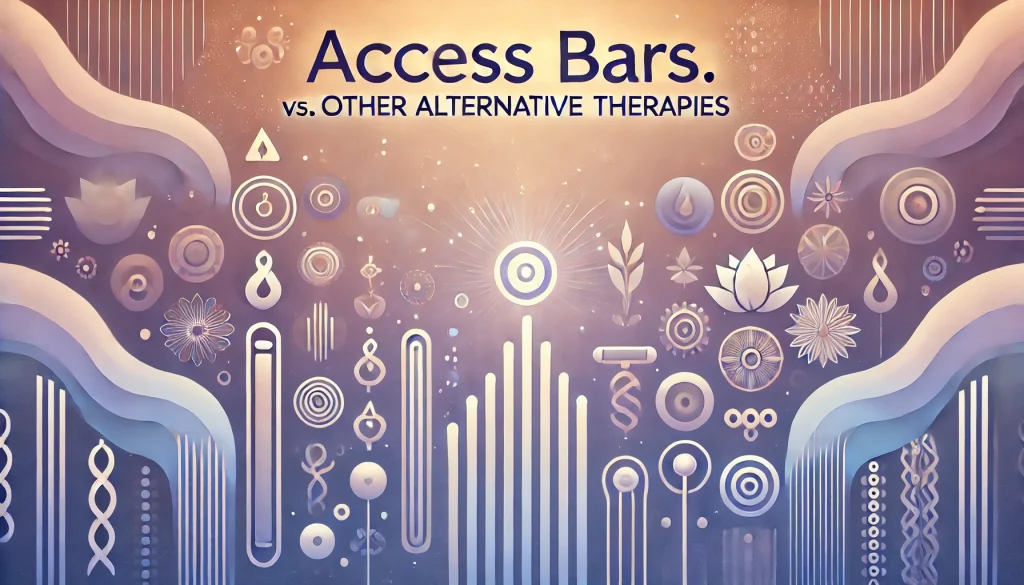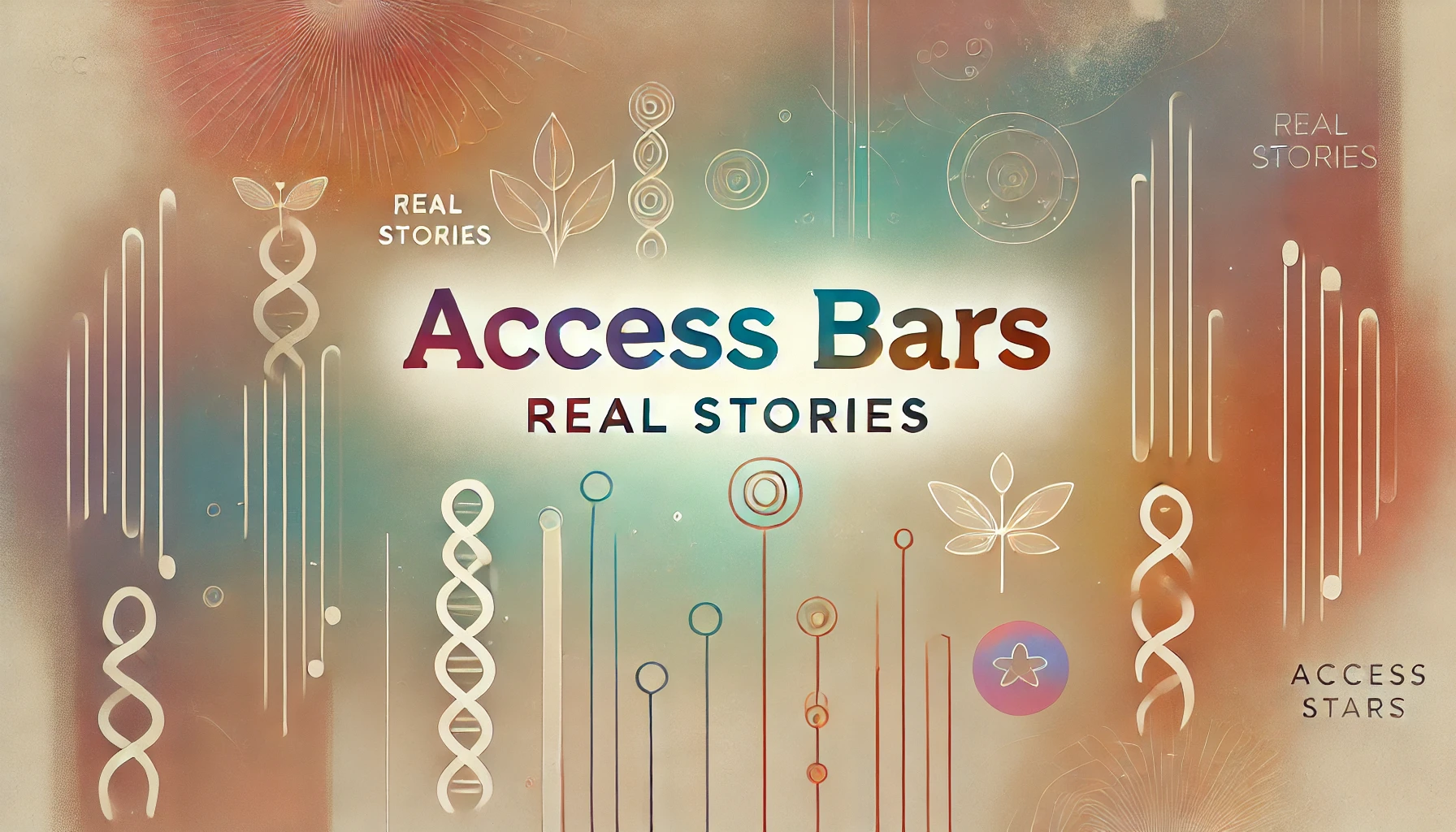Alternative therapies have gained significant popularity as more people seek natural and holistic approaches to health and wellness. Among these therapies, Access Bars stands out as a unique technique that involves gently touching 32 points on the head to release mental, emotional, and physical blocks. But how does Access Bars compare to other popular alternative therapies? This article will explore the differences and similarities between Access Bars and other alternative therapy methods, helping you determine which one might be the best fit for your needs.

What is Access Bars?
Access Bars is an energy healing technique developed by Gary Douglas in the early 1990s. It involves lightly touching 32 points on the head, which correspond to different aspects of life, such as money, control, creativity, and healing. The goal of Access Bars is to release the electromagnetic charge of thoughts, feelings, and beliefs that are stored in these points, allowing for greater ease, relaxation, and mental clarity.
How Access Bars Works
During an Access Bars session, a practitioner gently touches the 32 points on the head, holding each point for a few minutes. This process is believed to release stored energy, allowing the individual to let go of limiting beliefs and negative emotions. Many people report feeling deeply relaxed, with some experiencing a sense of lightness and clarity after the session.
Comparing Access Bars with Other Alternative Therapies
While Access Bars is a powerful tool for personal growth and healing, it is not the only alternative therapy available. Here, we compare Access Bars with other popular alternative therapies, highlighting their differences and similarities.
Reiki
Reiki is a Japanese energy healing technique that involves the transfer of universal energy from the practitioner’s hands to the client. Unlike Access Bars, which focuses on specific points on the head, Reiki is a full-body treatment that can be performed with hands-on or hands-off techniques. Both therapies aim to balance the body’s energy, but Reiki is more focused on channeling energy through the entire body rather than targeting specific points.
- Similarities: Both Access Bars and Reiki are energy-based therapies that aim to promote relaxation and healing by balancing the body’s energy.
- Differences: Access Bars targets 32 specific points on the head, while Reiki is a full-body energy healing technique that can be performed hands-on or hands-off.
Acupuncture
Acupuncture is an ancient Chinese therapy that involves inserting thin needles into specific points on the body to balance the flow of energy, or “qi.” Like Access Bars, acupuncture works with the body’s energy, but it does so by stimulating specific points along the body’s meridians. Acupuncture is often used to treat physical ailments, such as pain and digestive issues, as well as mental and emotional conditions.
- Similarities: Both Access Bars and acupuncture focus on releasing energy blockages to promote healing and well-being.
- Differences: Acupuncture uses needles to stimulate specific points along the body’s meridians, while Access Bars uses gentle touch on the head’s 32 points.
EFT (Emotional Freedom Techniques)
EFT, also known as tapping, is a psychological acupressure technique that involves tapping on specific points on the body while focusing on a particular issue or emotion. EFT is often used to reduce anxiety, stress, and emotional trauma. Unlike Access Bars, which is more passive and involves lying down while the practitioner touches the points, EFT is an active process that requires the individual to engage in the tapping process while addressing specific emotions.
- Similarities: Both Access Bars and EFT focus on releasing emotional blocks and promoting mental clarity.
- Differences: Access Bars is a passive therapy that involves gentle touch on the head, while EFT is an active process that involves tapping on specific points while addressing emotions.
Reflexology
Reflexology is a therapeutic technique that involves applying pressure to specific points on the feet, hands, or ears that correspond to different organs and systems in the body. The goal of reflexology is to promote relaxation and improve overall health by stimulating these reflex points. While Access Bars focuses on the head, reflexology targets points on the feet, hands, and ears.
- Similarities: Both Access Bars and reflexology aim to promote relaxation and improve well-being by stimulating specific points on the body.
- Differences: Access Bars focuses on 32 points on the head, while reflexology targets reflex points on the feet, hands, and ears.
Craniosacral Therapy
Craniosacral therapy is a gentle, hands-on technique that involves the manipulation of the craniosacral system, which includes the membranes and cerebrospinal fluid surrounding the brain and spinal cord. The goal of craniosacral therapy is to release tension and improve the function of the central nervous system. While both Access Bars and craniosacral therapy involve gentle touch, craniosacral therapy is more focused on the physical structure of the body, particularly the craniosacral system.
- Similarities: Both Access Bars and craniosacral therapy involve gentle touch and aim to promote relaxation and healing.
- Differences: Craniosacral therapy focuses on the craniosacral system and the central nervous system, while Access Bars targets 32 points on the head to release energy blockages.
When to Choose Access Bars
Access Bars may be the right choice for you if you are looking for a gentle, non-invasive therapy that focuses on releasing mental, emotional, and physical blocks. It is particularly beneficial for individuals who:
- Seek Mental Clarity: Access Bars can help clear mental clutter and improve focus and decision-making.
- Want to Release Limiting Beliefs: If you feel stuck in patterns of negative thinking, Access Bars can help you let go of these limiting beliefs.
- Need Deep Relaxation: Many people find Access Bars sessions deeply relaxing, making it a good choice for stress relief and anxiety reduction.
When to Consider Other Therapies
While Access Bars is a powerful tool, other therapies may be more suitable depending on your specific needs:
- Reiki: If you are looking for a full-body energy healing experience, Reiki may be a better fit.
- Acupuncture: If you are dealing with specific physical ailments, such as chronic pain or digestive issues, acupuncture might be more appropriate.
- EFT: If you prefer an active approach to addressing emotional issues, EFT could be the right choice.
- Reflexology: If you enjoy foot, hand, or ear stimulation and want to target specific organs or systems, reflexology may be ideal.
- Craniosacral Therapy: If you are dealing with issues related to the central nervous system or craniosacral system, craniosacral therapy might be more effective.
Conclusion
Access Bars is a unique and powerful alternative therapy that can help release mental, emotional, and physical blocks. While it shares similarities with other alternative therapies like Reiki, acupuncture, EFT, reflexology, and craniosacral therapy, each method has its distinct approach and benefits. By understanding these differences, you can choose the therapy that best suits your needs and goals.


